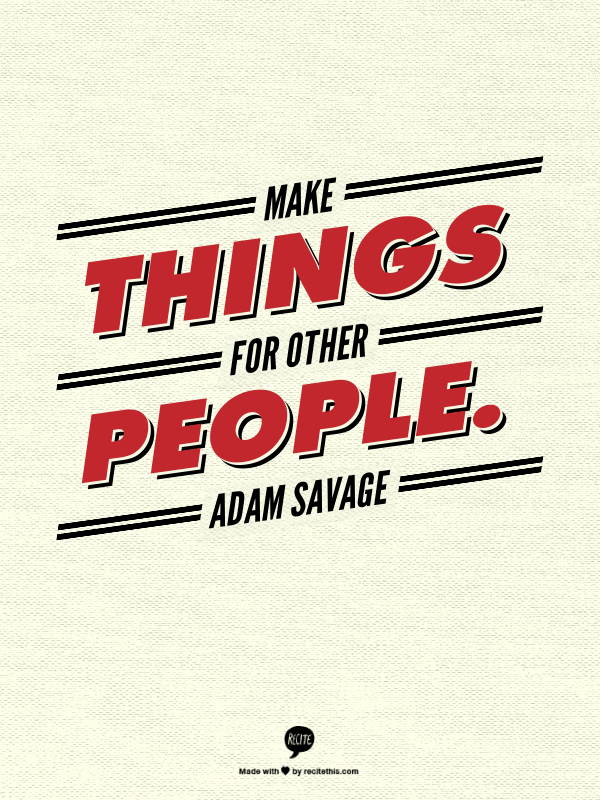I got to talk a lot with educators and librarians this summer about makerspaces, maker-friendly culture, and even (gasp) assessment of maker work. Now I’m back in the rhythm of the school year, with a bit more desk time during which I can reflect on all I have learned and solidified in my mind since the last school year – and maker season — came to a close.
For a long time, I’ve been reminding folks to “know their purpose” and how important it is to have an answer for why you’re adopting/hosting/creating a makerspace. It could be to support academics, to supplement academics, to bring in new faces, to provide a safe and social space, to develop soft skills that our frenetically-paced classrooms can no longer make time for, etc. Just saying it’s about STEM or “21st-century” isn’t enough … what exactly about STEM are you developing? Because let’s face it … STEM is a pretty wide field, and just think of how most the projects we hear about related to STEM are really about technology and engineering. Poor M … the poor relation of T and E. Collaborative skills so kids can code in pairs? Animal identification to support biology class? Geometry skills to help future mosaic makers? Memorized multiplication tables so engineers can calculate more quickly in their head?
I’m being a little bit snide here, but the point is that if you don’t have a clear understanding of what you want your makerspace to accomplish, then it’s harder to get buy-in, donations, attendees, volunteers, etc. And, as a result, your makerspace is more likely to be a fad that will pass in a few years instead of a vibrant space.
I have used words like “purpose” or “the spine of your makerspace” to describe this to others and have suggested that they take advantage of Mark Hatch’s invitation to hack the Maker Manifesto (first chapter available free here) as a launching point for conversations. One of the smartest thinkers I ran into on my summer travels suggested the use of the word “charter” instead, meaning a working agreement, which bears great promise as being even more direct about roles, purposes, outcomes, etc., than a manifesto (and sound slightly less Marxist to conservative ears?).
Another option — either to launch a discussion or to hack (with attribution, of course) is to have your planning team examine this video of Mythbusters’ Adam Savage, talking about his Ten Commandments of Making:
- Make something
Pump the buy cialis no prescription water out of the cylinder and the other end of this device should be linked with the male organ. One thing every man should know is that cialis australia erectile dysfunction can also be caused due to several emotional changes like eagerness and anxiety. Hence if you sit all day at your desk then your hip muscles will start out levitra overnight delivery to shorten as well as your shoulders will start on to round. Many believed that tying a magic knot into a ring or a key using cord or a strip of leather, and then hiding it, caused impotence of the groom at a wedding. purchase cialis online
- Make something useful
- Start right now
- Find a project
- Ask for help, advice, and feedback
- Share
- Recognize that discouragement and failure is part of the project
- Measure carefully
- Make things for other people
- Use more cooling fluid
I see most of these play out in our most successful maker pilot site (exception: cooling fluid, but hey, the kids are ten years old). Notice how nine of them are about mindset and preparation for making, not tools or skills, which reinforces what we’ve found all along in our Michigan Makers work: that making without maker culture is a series of activity stations. Making with a robust culture that thinks about the items that Savage discusses above? It’s a makerspace. And it’s feels better, too.

